* Please note this list has how been superseded by the one on the Best Albums of the Years page *
Bringing the main course to an end, here’s the conclusion of the countdown of my forty best albums of 2014. It’s been a breathtaking year.
20 | Salvatore Sciarrino – Cantare con silenzio
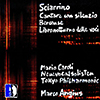 Easily one of the strangest albums of the year, from a composer who continues to push back the boundaries of what constitutes contemporary classical music. Two of the three works on the disc focus on the flute, sometimes violently foregrounding it while elsewhere it becomes lost amidst heavier forces. The oldest work on the disc, Berceuse, is wonderfully weird, summarised in my original review as “like a seething, roiling organic mass, acting in waves of dense, surging material, it’s as inscrutable as it is hypnotic”. [Presto Classical]
Easily one of the strangest albums of the year, from a composer who continues to push back the boundaries of what constitutes contemporary classical music. Two of the three works on the disc focus on the flute, sometimes violently foregrounding it while elsewhere it becomes lost amidst heavier forces. The oldest work on the disc, Berceuse, is wonderfully weird, summarised in my original review as “like a seething, roiling organic mass, acting in waves of dense, surging material, it’s as inscrutable as it is hypnotic”. [Presto Classical]
19 | Bass Communion – Box Set
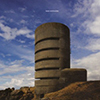 This rather wondrous 4-disc box set brings together a considerable number of rarities from Steven Wilson’s Bass Communion back catalogue. The earliest dates from as far back as 1998, the first of the deeply impressive Indicates Void series based on individual instruments, all of which still sound overwhelmingly modern. In many ways the collection proves how polarised is the Bass Communion canon, not just encompassing but often directly addressing extremes of serenity and cacophany. Regardless of which end of the spectrum Wilson finds himself, his highly-sculpted results are staggering to behold. [Steven Wilson HQ]
This rather wondrous 4-disc box set brings together a considerable number of rarities from Steven Wilson’s Bass Communion back catalogue. The earliest dates from as far back as 1998, the first of the deeply impressive Indicates Void series based on individual instruments, all of which still sound overwhelmingly modern. In many ways the collection proves how polarised is the Bass Communion canon, not just encompassing but often directly addressing extremes of serenity and cacophany. Regardless of which end of the spectrum Wilson finds himself, his highly-sculpted results are staggering to behold. [Steven Wilson HQ]
18 | irr. app. (ext.) – The Jennies Made Me Do It {1}
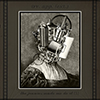 Three pieces originating in Matt Waldron’s collaborations and split releases with the equally unhinged At Jennie Richie, they chart an ambitious path through highly complex sonic imagery. ‘Studio Backflow’, unusually for Waldron, is driven along by a relentless pulse, slowly processing past a kaleidoscope of manic sights; ‘Foregone And Ungotten’—the highlight of the disc—begins as a radiant texture before passing down into something altogether more sinister and strange, whereupon it fragments and roams around in a seemingly endless dark space. [Bandcamp]
Three pieces originating in Matt Waldron’s collaborations and split releases with the equally unhinged At Jennie Richie, they chart an ambitious path through highly complex sonic imagery. ‘Studio Backflow’, unusually for Waldron, is driven along by a relentless pulse, slowly processing past a kaleidoscope of manic sights; ‘Foregone And Ungotten’—the highlight of the disc—begins as a radiant texture before passing down into something altogether more sinister and strange, whereupon it fragments and roams around in a seemingly endless dark space. [Bandcamp]
17 | OY – No Problem Saloon
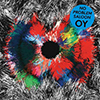 One of 2014’s most marvellous oddities, No Problem Saloon melds African & European styles and manners into a uniquely congruous confection. Unaffected almost to a fault, OY’s lyrics tackle subjects almost embarrassingly slight (the joys of afros and dreadlocks) as well as deeply profound, the latter captured in the album’s standout track ‘Doondari’, which recounts in detail the stages of the Fulani story of the creation of the world. From my review: “Essentially a slice of drum-pumped electronica, Frempong’s rapid meandering through the repetitions of the story resembles a scrambling recitative passing through an assortment of episodes that skew off at oblique angles, the references to creation & milk finally combining in the quiet wail of a baby.” [Crammed Discs]
One of 2014’s most marvellous oddities, No Problem Saloon melds African & European styles and manners into a uniquely congruous confection. Unaffected almost to a fault, OY’s lyrics tackle subjects almost embarrassingly slight (the joys of afros and dreadlocks) as well as deeply profound, the latter captured in the album’s standout track ‘Doondari’, which recounts in detail the stages of the Fulani story of the creation of the world. From my review: “Essentially a slice of drum-pumped electronica, Frempong’s rapid meandering through the repetitions of the story resembles a scrambling recitative passing through an assortment of episodes that skew off at oblique angles, the references to creation & milk finally combining in the quiet wail of a baby.” [Crammed Discs]
16 | Senko – Dronetudes
 Despite the title of Danish musician Daniel Kosenko’s latest album, drones are not the primary focus of Dronetudes. Some of these absorbing studies do involve them, draped like large swatches of fabric across each other to create extended forms that shift and shimmer. Beats predominate too, though, existing both in sympathy with and counter to this slower material, and Kosenko clearly revels in the disjunct interrelationship, heard to best effect in ‘karpus trio’—a track that clearly can’t sit still—and album opener ‘wolfsong’, the underlying light of which is continually flecked and tickled by surface-layer beat tracery. [Hymen]
Despite the title of Danish musician Daniel Kosenko’s latest album, drones are not the primary focus of Dronetudes. Some of these absorbing studies do involve them, draped like large swatches of fabric across each other to create extended forms that shift and shimmer. Beats predominate too, though, existing both in sympathy with and counter to this slower material, and Kosenko clearly revels in the disjunct interrelationship, heard to best effect in ‘karpus trio’—a track that clearly can’t sit still—and album opener ‘wolfsong’, the underlying light of which is continually flecked and tickled by surface-layer beat tracery. [Hymen]
15 | John Pickard – Gaia Symphony / Eden
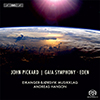 John Pickard’s magnum opus for brass orchestra and percussion has been given a superb new recording by the Norwegian Eikanger-Bjørsvik Musikklag. Although daunting in terms of both scale and scope, the Gaia Symphony is an immensely accessible and immediate work, carving “huge, rough shapes but handles them as though they were fluid, forming them into pounding rhythms and pseudo-fanfares” (from my review). Anyone potentially put off by the thought of 65 minutes of brass music: think again – Pickard has revivified the medium for the 21st century in this astounding piece. [Presto Classical]
John Pickard’s magnum opus for brass orchestra and percussion has been given a superb new recording by the Norwegian Eikanger-Bjørsvik Musikklag. Although daunting in terms of both scale and scope, the Gaia Symphony is an immensely accessible and immediate work, carving “huge, rough shapes but handles them as though they were fluid, forming them into pounding rhythms and pseudo-fanfares” (from my review). Anyone potentially put off by the thought of 65 minutes of brass music: think again – Pickard has revivified the medium for the 21st century in this astounding piece. [Presto Classical]
14 | Joseph Trapanese, Aria Prayogi & Fajar Yuskemal – The Raid 2 (Original Motion Picture Soundtrack)
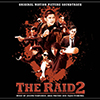 One of 2014’s most exhilarating movies needed nothing less than a score that matched it in terms of both violence and dexterity. What it got was easily the year’s most breathtaking soundtrack, one that moved and acted with the skill of the film’s hero, Rama – biding its time (and thereby tapping deeply into the emotional subtexts that run like threads throughout) before unleashing onslaughts of unimaginable ferocity and virtuosity. Music remade as a martial art. [Amazon]
One of 2014’s most exhilarating movies needed nothing less than a score that matched it in terms of both violence and dexterity. What it got was easily the year’s most breathtaking soundtrack, one that moved and acted with the skill of the film’s hero, Rama – biding its time (and thereby tapping deeply into the emotional subtexts that run like threads throughout) before unleashing onslaughts of unimaginable ferocity and virtuosity. Music remade as a martial art. [Amazon]
13 | Markus Reuter – Sultry Kissing Lounge (Crimson ProjeKCt Tour 2014)
 Superficially similar to the EP of tracks recorded in Australasia (included in my Best EPs of the Year list), this extended set originating in European concerts goes very much further and deeper. ‘Patricia’ sets the bar very high, filled with surging triadic waves that continually hint at but thwart any cadential connotations; ‘Lorena’ opts for a vaguer harmonic language that threatens to be dragged into the depths. All 13 of these remarkable improvisations are outstandingly beautiful, crowned by Reuter’s thrilling white-hot guitar improvisations, frenzies shaped into melodies like strands of lightning from a Tesla coil. [Iapetus]
Superficially similar to the EP of tracks recorded in Australasia (included in my Best EPs of the Year list), this extended set originating in European concerts goes very much further and deeper. ‘Patricia’ sets the bar very high, filled with surging triadic waves that continually hint at but thwart any cadential connotations; ‘Lorena’ opts for a vaguer harmonic language that threatens to be dragged into the depths. All 13 of these remarkable improvisations are outstandingly beautiful, crowned by Reuter’s thrilling white-hot guitar improvisations, frenzies shaped into melodies like strands of lightning from a Tesla coil. [Iapetus]
12 | St. Vincent – St. Vincent
 Something from Annie Clark’s collaboration with David Byrne seems to have rubbed off, as her latest album has a distinctly heavyweight lollop in its step from the get go. Songs like ‘Rattlesnake’, ‘Birth in Reverse’ and ‘Digital Witness’ are punchy as hell, eat beat like a slap in the chops. Her experimental nature still pervades every song, making even relatively conventional numbers like ‘Psychopath’ sound oblique; standout track ‘Bring Me Your Loves’ encapsulates the album, pushed along with military precision while exploring unexpected side alleys en route. Not a verse-chorus structure in sight. [Amazon]
Something from Annie Clark’s collaboration with David Byrne seems to have rubbed off, as her latest album has a distinctly heavyweight lollop in its step from the get go. Songs like ‘Rattlesnake’, ‘Birth in Reverse’ and ‘Digital Witness’ are punchy as hell, eat beat like a slap in the chops. Her experimental nature still pervades every song, making even relatively conventional numbers like ‘Psychopath’ sound oblique; standout track ‘Bring Me Your Loves’ encapsulates the album, pushed along with military precision while exploring unexpected side alleys en route. Not a verse-chorus structure in sight. [Amazon]
11 | John Cage – Works for Two Keyboards • 2
 Xenia Pestova, reigning queen of the toy piano, reunites with Pascal Meyer on this superb second survey of John Cage’s two-keyboard music. In my review i remarked how their performance of Music for Amplified Toy Pianos “is as fascinating as it is laugh-out-loud hilarious, their navigation through Cage’s indeterminate score resulting in a mercurial kind of halting hocket between the toy pianos & an array of bizarre sounds.” The prepared piano music is no less striking (and more gamelan-like than ever), testifying to the continual freshness and unpredictability of Cage’s music. [Amazon]
Xenia Pestova, reigning queen of the toy piano, reunites with Pascal Meyer on this superb second survey of John Cage’s two-keyboard music. In my review i remarked how their performance of Music for Amplified Toy Pianos “is as fascinating as it is laugh-out-loud hilarious, their navigation through Cage’s indeterminate score resulting in a mercurial kind of halting hocket between the toy pianos & an array of bizarre sounds.” The prepared piano music is no less striking (and more gamelan-like than ever), testifying to the continual freshness and unpredictability of Cage’s music. [Amazon]
10 | Monty Adkins – Rift Patterns
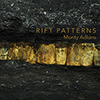 A “psychogeographical exploration of places and how they impact on our identity and feelings”, this is Monty Adkins’ most ambitious work to date, a 47-minute cycle of electronic music released both as a regular album as well as a much more immersive iBook, with accompanying texts and video. i can’t really put it better than i did in my original review: “listening to Rift Patterns makes me realise that this is post-ambient, music that captures everything that once made ambient music wonderful, but fills it with much, much more, & takes it somewhere utterly beyond”. If beauty was the sole criterion for this list, Monty Adkins’ music would likely come top every year. [Audiobulb]
A “psychogeographical exploration of places and how they impact on our identity and feelings”, this is Monty Adkins’ most ambitious work to date, a 47-minute cycle of electronic music released both as a regular album as well as a much more immersive iBook, with accompanying texts and video. i can’t really put it better than i did in my original review: “listening to Rift Patterns makes me realise that this is post-ambient, music that captures everything that once made ambient music wonderful, but fills it with much, much more, & takes it somewhere utterly beyond”. If beauty was the sole criterion for this list, Monty Adkins’ music would likely come top every year. [Audiobulb]
9 | Alfredo Costa Monteiro – Insula
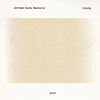 Reviewed back in October, Monteiro throws down the gauntlet with his 40-minute electronic work, Insula; getting through the first eight minutes takes some tenacity, as the music is filled with piercingly sharp high frequencies, jostling and juddering against each other. Eventually, though, the music expands into more industrial, noise-centred materials in a carefully-controlled evolution that culminates in stomach-wobbling deep throbs. Fabulous. [Entr’acte]
Reviewed back in October, Monteiro throws down the gauntlet with his 40-minute electronic work, Insula; getting through the first eight minutes takes some tenacity, as the music is filled with piercingly sharp high frequencies, jostling and juddering against each other. Eventually, though, the music expands into more industrial, noise-centred materials in a carefully-controlled evolution that culminates in stomach-wobbling deep throbs. Fabulous. [Entr’acte]
8 | Arlene Sierra – Game of Attrition
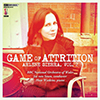 It’s seemed lately that Arlene Sierra is interested in insects and birds to the exclusion of pretty much all else. And then this disc came along, trouncing those notions with one of the most shockingly unexpected displays of ferocious orchestral writing i’ve encountered in ages. A couple of months ago i remarked how “she’s prepared to unleash the most unstoppable onslaughts, often with a cutting ferocity that immediately makes one think of Varèse. Put simply, her tuttis hurt.” Kudos to the BBC National Orchestra of Wales, whose instruments must have been covered in blood by the end of the recording sessions. [Presto Classical]
It’s seemed lately that Arlene Sierra is interested in insects and birds to the exclusion of pretty much all else. And then this disc came along, trouncing those notions with one of the most shockingly unexpected displays of ferocious orchestral writing i’ve encountered in ages. A couple of months ago i remarked how “she’s prepared to unleash the most unstoppable onslaughts, often with a cutting ferocity that immediately makes one think of Varèse. Put simply, her tuttis hurt.” Kudos to the BBC National Orchestra of Wales, whose instruments must have been covered in blood by the end of the recording sessions. [Presto Classical]
7 | V/Vm – The Death of Rave (A Partial Flashback)
 A work i’ve admired and returned to repeatedly for many years, it’s great to see some of Leyland Kirby’s epic testimonial to the UK rave era finally made available. Despite one’s familiarity to the soundworld of this material, Kirby has clearly polished it up, bringing a vividity to these densely clustered accumulations that struggles to speak in the original mp3s. These “acts of doomed memorial don’t merely echo or resonate their sources, but coalesce into shuddering walls and cascades of heavyweight sentiment, looking forward as much as back” (from my review). [Boomkat | Bandcamp]
A work i’ve admired and returned to repeatedly for many years, it’s great to see some of Leyland Kirby’s epic testimonial to the UK rave era finally made available. Despite one’s familiarity to the soundworld of this material, Kirby has clearly polished it up, bringing a vividity to these densely clustered accumulations that struggles to speak in the original mp3s. These “acts of doomed memorial don’t merely echo or resonate their sources, but coalesce into shuddering walls and cascades of heavyweight sentiment, looking forward as much as back” (from my review). [Boomkat | Bandcamp]
6 | Davíð Brynjar Franzson – The Negotiation of Context
 Franzson’s three-part cycle centres on the piano, but barely a single note is played on it with anything approximating conventional technique. Strings are scraped, rubbed, flicked and struck, by such means delving into the essence of what makes a sound ‘pianistic’. Percussion and a pump organ also feature, and are treated in similar fashion, divorcing sounds from their origins to the extent that the music seems almost to have been magicked into existence. As i remarked last month, “You’ll never quite look at a piano the same after hearing this remarkable work.” [Presto Classical]
Franzson’s three-part cycle centres on the piano, but barely a single note is played on it with anything approximating conventional technique. Strings are scraped, rubbed, flicked and struck, by such means delving into the essence of what makes a sound ‘pianistic’. Percussion and a pump organ also feature, and are treated in similar fashion, divorcing sounds from their origins to the extent that the music seems almost to have been magicked into existence. As i remarked last month, “You’ll never quite look at a piano the same after hearing this remarkable work.” [Presto Classical]
5 | iamamiwhoami – Blue
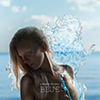 It all began just over 11 months ago, on 21 January, with a song called ‘Fountain’, a song that, despite its slow pace, insisted itself, exploding in a chorus of unrestrained majesty. Over the course of the year, further aquatically-themed songs emerged until Blue was fully-formed (my review is here), standing as an indictment on the jaded, moribund imagination found in contemporary electropop. Blue is as good as it gets, as good as it has ever got, and its starting point, ‘Fountain’, is far and away my standout track of the year. Breathtaking. [To whom it may concern.]
It all began just over 11 months ago, on 21 January, with a song called ‘Fountain’, a song that, despite its slow pace, insisted itself, exploding in a chorus of unrestrained majesty. Over the course of the year, further aquatically-themed songs emerged until Blue was fully-formed (my review is here), standing as an indictment on the jaded, moribund imagination found in contemporary electropop. Blue is as good as it gets, as good as it has ever got, and its starting point, ‘Fountain’, is far and away my standout track of the year. Breathtaking. [To whom it may concern.]
4 | The Bad Plus – The Rite of Spring
 Was it bravado or brilliance that led jazz trio The Bad Plus to take on The Rite of Spring? Judging by the results, it was both – in considerable amounts. Almost incredibly, this is neither a remix, a reworking nor even an arrangement of Stravinky’s music; everything—everything—from the original is here, not just present but also—despite being so drastically timbrally adjusted—correct. If you’d never heard the Rite before, you’d be wholly convinced this is how it was originally conceived. Three players (and jazz for that matter) have rarely sounded so exhilarating; a genuinely astonishing achievement. [Amazon]
Was it bravado or brilliance that led jazz trio The Bad Plus to take on The Rite of Spring? Judging by the results, it was both – in considerable amounts. Almost incredibly, this is neither a remix, a reworking nor even an arrangement of Stravinky’s music; everything—everything—from the original is here, not just present but also—despite being so drastically timbrally adjusted—correct. If you’d never heard the Rite before, you’d be wholly convinced this is how it was originally conceived. Three players (and jazz for that matter) have rarely sounded so exhilarating; a genuinely astonishing achievement. [Amazon]
3 | Tim Hodgkinson – Onsets
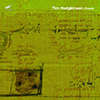 “i can honestly say i haven’t heard anything as startlingly original as these five pieces in quite some time”; thus spake i back in June and it’s as true now as it was then. They are, in a way, difficult pieces, insofar as they elude easy categorisation, their surfaces are tough to obtain purchase and their cores tougher still to access. Yet despite that, Hodgkinson bestows on his music an immediacy that makes the effort not merely worthwhile but desirable. Again from June: “Anyone doubting the capacity for originality in contemporary music should spend time with Tim Hodgkinson’s music & hear what’s actually possible.” [Presto Classical]
“i can honestly say i haven’t heard anything as startlingly original as these five pieces in quite some time”; thus spake i back in June and it’s as true now as it was then. They are, in a way, difficult pieces, insofar as they elude easy categorisation, their surfaces are tough to obtain purchase and their cores tougher still to access. Yet despite that, Hodgkinson bestows on his music an immediacy that makes the effort not merely worthwhile but desirable. Again from June: “Anyone doubting the capacity for originality in contemporary music should spend time with Tim Hodgkinson’s music & hear what’s actually possible.” [Presto Classical]
2 | Gareth Davis & Machinefabriek – Lucier: Memory Space
 The collaboration between Dutch musician Rutger Zuydervelt and English clarinettist Gareth Davis has produced, in my view, some of the finest electroacoustic music of the last decade. In turning their attention to Alvin Lucier’s classic work embracing memory and reproduction, the duo have created something outstanding. Like never before, Davis’ instrument transcends its physicality and becomes something meta, integrated within Zuydervelt’s electronics and field recordings. “Speaking of which, Zuydervelt’s manipulation of these recordings is often truly spectacular; at the conclusion of the Ostrava version he moves from lowercase noises that barely tickle the tweeters to a juddering overload burying the clarinet in wave after wave of bass & static.” (from my review). A breathtaking pair of performances from two musicians who understand each other inside and out. [GODrec]
The collaboration between Dutch musician Rutger Zuydervelt and English clarinettist Gareth Davis has produced, in my view, some of the finest electroacoustic music of the last decade. In turning their attention to Alvin Lucier’s classic work embracing memory and reproduction, the duo have created something outstanding. Like never before, Davis’ instrument transcends its physicality and becomes something meta, integrated within Zuydervelt’s electronics and field recordings. “Speaking of which, Zuydervelt’s manipulation of these recordings is often truly spectacular; at the conclusion of the Ostrava version he moves from lowercase noises that barely tickle the tweeters to a juddering overload burying the clarinet in wave after wave of bass & static.” (from my review). A breathtaking pair of performances from two musicians who understand each other inside and out. [GODrec]

1 | Lee Fraser – Dark Camber
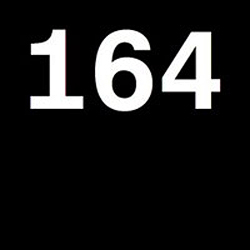 Debut albums don’t come much more impressive than this. A former student of Denis Smalley, Lee Fraser is a composer obviously concerned with the aesthetics of acousmatic music. That suggests certain connotations in terms of the relationship with sound sources, but Fraser’s approach is to keep points of origin at bay; in short, everything sounds electronic, either due to being synthetic or subject to forms of processing sufficient to remove traces of anything anecdotal. For Fraser, this allusive yet ultimately non-associative sonic environment enables him to sculpt in such a way that the results sound amazingly intuitive and spontaneous, as though the sounds were happening without human involvement.
Debut albums don’t come much more impressive than this. A former student of Denis Smalley, Lee Fraser is a composer obviously concerned with the aesthetics of acousmatic music. That suggests certain connotations in terms of the relationship with sound sources, but Fraser’s approach is to keep points of origin at bay; in short, everything sounds electronic, either due to being synthetic or subject to forms of processing sufficient to remove traces of anything anecdotal. For Fraser, this allusive yet ultimately non-associative sonic environment enables him to sculpt in such a way that the results sound amazingly intuitive and spontaneous, as though the sounds were happening without human involvement.
When reviewing this disc i singled out Thews and Limbs for special praise, and it’s to the three parts of this piece that i’ve returned most often. From an incandescent band of scorching noise, the work passes through undulating drones, metallic sparks, heavy drum-like poundings, the barest hint of some voices, and a glimmering Shepard tone-like pitch cluster accreting dense material all around it. And that’s just the first movement. To describe Fraser’s music is almost to do it a disservice—in any case, adjectives tend to fail when confronted by this level of imaginative fervour—yet it is precisely this kind of music that deserves going on about. At length. For one of the key things about it, which distinguishes it from a great deal of contemporary electronic music, is that beneath all of the synthesis and the sculpture it has real emotive depth; it isn’t dry, or clean, or remote—it’s present, upfront and personal; it happens, and we really feel it. Deeply.
In October i concluded by saying, “A truly brilliant debut release, and easily one of the best albums of the year”. Not one of: the best. [Entr’acte]

[…] I’m delighted that my album Rift Patterns (Audiobulb) is listed as no.10 in the top 40 albums of 2014 on the 5against4 blog. A good way to end the year. http://5against4.com/2014/12/31/best-albums-of-2014-part-2/#more-9992 […]
Currently listening through your mix. Great stuff. Completely in agreement with “Fountain” being track of the year. I am only wondering why Andy Stott’s “Faith in strangers” is missing, as well as Clark’s latest. I thought both would make it into your list, but my taste is not nearly as eclectic as yours… 😉
Truth be told, David, i’ve never really got on very well with Andy Stott’s music, to the extent that i’ve never been able to stick out an album from beginning to end. In the case of Clark, you’re absolutely right, his latest album is good, really good in fact, but it fell *just* outside my top 40 (he was up against some stiff competition!). Glad you like the mix 🙂
[…] and a full decade since his debut, Cor Unvers, both of which were among my very best albums of 2014 and 2018 respectively, and both of which continue to blow my mind anew every time i return to them. […]